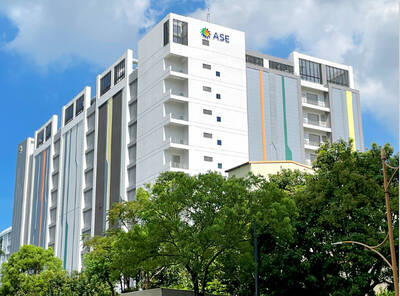World Bank president David Malpass on Wednesday said that it could take years for global energy production to diversify away from Russia after its invasion of Ukraine, prolonging the risk of stagflation, or a period of low growth and high inflation.
In a speech at Stanford University, Malpass said that there was an increased likelihood of a recession in Europe, while China’s growth was slowing sharply and US economic output had contracted in the first half of this year.
Those developments would have grave consequences for developing countries, Malpass said, citing what he called “consequential” and “worsening” challenges facing development.

Photo: AFP
Addressing the current “perfect storm” of rising interest rates, high inflation and slowing growth requires new macroeconomic and microeconomic approaches, including better-targeted spending and clearly messaged efforts to increase supplies, Malpass said.
Malpass said that the bank’s upcoming “Poverty and Shared Prosperity” report showed that decades of progress in reducing poverty had slowed by 2015, even before the COVID-19 pandemic, which sent an additional 70 million people into extreme poverty.
The report, due out next week, also showed a 4 percent decline in the global median income, the first decline since the bank began measuring that indicator in 1990, he said.
“The developing world is facing an extremely challenging near-term outlook shaped by sharply higher food fertilizer and energy prices; rising interest rates and credit spreads; currency depreciation and capital outflows,” Malpass said.
“A pressing danger for the developing world is that the sharp slowdown in global growth deepens into a global recession,” he said, adding that many of these countries were still struggling to return to pre-pandemic per capita income levels at a time of heightened climate change risks.
Malpass said that it was unclear whether there would be enough global capital to meet the needs of advanced economies, which had adopted fiscal policies favoring higher debt levels, and whether there would still be enough leftover to fund the investment needs of developing countries.
He urged countries to look for ways to reduce inflation beyond the highly synchronized interest rates hikes now under way, including by increasing fiscal efficiency to target spending more to the poor and vulnerable.
Such adjustments would improve the allocation of global capital, providing a path to reduce inflation while restarting growth in median income, he said.
More funding for education, health preparedness and adaptation to climate change was urgently needed, he said, along with steps to reduce the staggering debt levels burdening many developing countries.

AI BOOST: Although Taiwan’s reliance on Chinese rare earth elements is limited, it could face indirect impacts from supply issues and price volatility, an economist said DBS Bank Ltd (星展銀行) has sharply raised its forecast for Taiwan’s economic growth this year to 5.6 percent, citing stronger-than-expected exports and investment linked to artificial intelligence (AI), as it said that the current momentum could peak soon. The acceleration of the global AI race has fueled a surge in Taiwan’s AI-related capital spending and exports of information and communications technology (ICT) products, which have been key drivers of growth this year. “We have revised our GDP forecast for Taiwan upward to 5.6 percent from 4 percent, an upgrade that mainly reflects stronger-than-expected AI-related exports and investment in the third

Mercuries Life Insurance Co (三商美邦人壽) shares surged to a seven-month high this week after local media reported that E.Sun Financial Holding Co (玉山金控) had outbid CTBC Financial Holding Co (中信金控) in the financially strained insurer’s ongoing sale process. Shares of the mid-sized life insurer climbed 5.8 percent this week to NT$6.72, extending a nearly 18 percent rally over the past month, as investors bet on the likelihood of an impending takeover. The final round of bidding closed on Thursday, marking a critical step in the 32-year-old insurer’s search for a buyer after years of struggling to meet capital adequacy requirements. Local media reports

TECHNOLOGICAL RIVALRY: The artificial intelligence chip competition among multiple players would likely intensify over the next two years, a Quanta official said Quanta Computer Inc (廣達), which makes servers and laptops on a contract basis, yesterday said its shipments of artificial intelligence (AI) servers powered by Nvidia Corp’s GB300 chips have increased steadily since last month, should surpass those of the GB200 models this quarter. The production of GB300 servers has gone much more smoothly than that of the GB200, with shipments projected to increase sharply next month, Quanta executive vice president Mike Yang (楊麒令) said on the sidelines of a technology forum in Taipei. While orders for GB200 servers gradually decrease, the production transition between the two server models has been

ASE Technology Holding Co (日月光投控), the world’s largest integrated circuit (IC) packaging and testing supplier, yesterday announced a strategic collaboration with Analog Devices Inc (ADI), coupled with the signing of a binding memorandum of understanding. Under the agreement, ASE intends to purchase 100 percent shares of Analog Devices Sdn Bhd and acquire its manufacturing facility in Penang, Malaysia, a press release showed. The ADI Penang facility is located in the prime industrial hub of Bayan Lepas, with an area of over 680,000 square feet, it said. In addition, the two sides intend to enter into a long-term supply agreement for ASE to